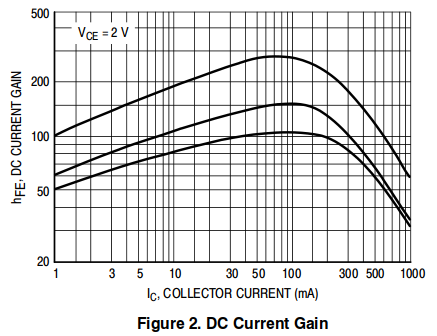

simulate this circuitsimulate this circuit – Schematic created using CircuitLab
As you can see, there is no base resistor. This is no omission from my part, and it is one of the benefits of this configuration: The transistor will draw the absolute minimum amount of base current necessary to keep the right amount of current flowing through the collector. A little warning however: If the 5V rail drops before the power to the Arduino, perhaps if they are powered from separate rails, all the current to the LED will come from the base, and thus from the Arduino.
2. Common emitter switch
This is the traditional "Transistor-as-a-switch" configuration, and is similar to what you have right now. The idea is however that the Arduino should drive the transistor fully on so it's saturated, passing as much current as it can, or at least enough so that the transistor is not the limiting factor.
The goal is to drive enough current through the base to make this happen. A conservative number is one tenth of the current through the collector. Since the output from the Arduino will be close to 5 volt, and VBE can be treated roughly as a diode, you will have about 4.3 or 4.4 volts across the base resistor. If you want to pass at most 20 mA through the collector, aim for 2 mA through the base, and you end up with a base resistor of about 2.2 kΩ.
The voltage VCE, between the collector and emitter, is called the saturation voltage and is usually small enough to be neglected. The datasheet for the BC637 shows it as less than 100 mV up to a collector current of 100 mA.
3. MOSFET switch
This is perhaps easierthe easiest to understand, because it's as intuitive as the common emitter switch, but you only have to calculate the load resistor. The Arduino simply drives the MOSFET fully on or off. The, but because the MOSFET does not draw any current at the gate, the gate resistors are not critical. The
he current limiting resistor is calculated as you would without the MOSFET, assuming that its RON is much lower than the resistor.

